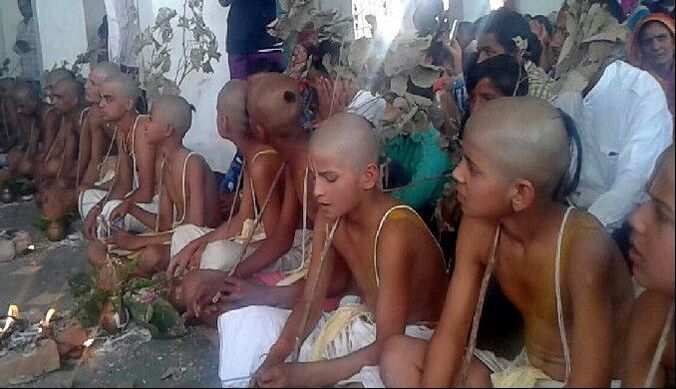|
Yajnopavita consists of two words, yajno and upavit. Vit means that which is woven, that is cloth and upavit means the upper garment. It is hand spun cotton thread worn across the chest resting on the left shoulder. Yajnopavita is mentioned as Janeu in Hindi. Under Upanayana Samskar, first Yajnopavita is performed to bring person to his father Gotra and then Upanayana ceremony is done to initiate teaching of Veda and teaching started with Gayathri Mantra. The Yajnopavita should be done in seventh years. However, it can be done up to eleventh years of age. The power of Yajnopavita inspires pure character and hard work. By wearing this Yajnopavita, one can reach to the ultimate.
In chapter 2 of Taittireeya Aranyaka discusses the five Maha-yajnas, the daily recitation of the Veda (svadhyaya), the yajnopavita (sacred thread) and sandhya worship. It describes the method of preparation of yajnopavita. The Yajnopavita is made up of nine fibers.
The 96 number has special significance. Vedas has 96000 Mantras related to karma and Upasana (fire-sacrifice & worship). After Yajnipavita, the student gets the right to study these Mantras. Total Mantras are 100,000. The remaining 4000 Mantra are for Sanyasis. The Yajnopavita is placed over the right ear lobe during urination or defecations. The reason is explained as under:
1 Comment
|
Archives
March 2022
Categories |

 RSS Feed
RSS Feed